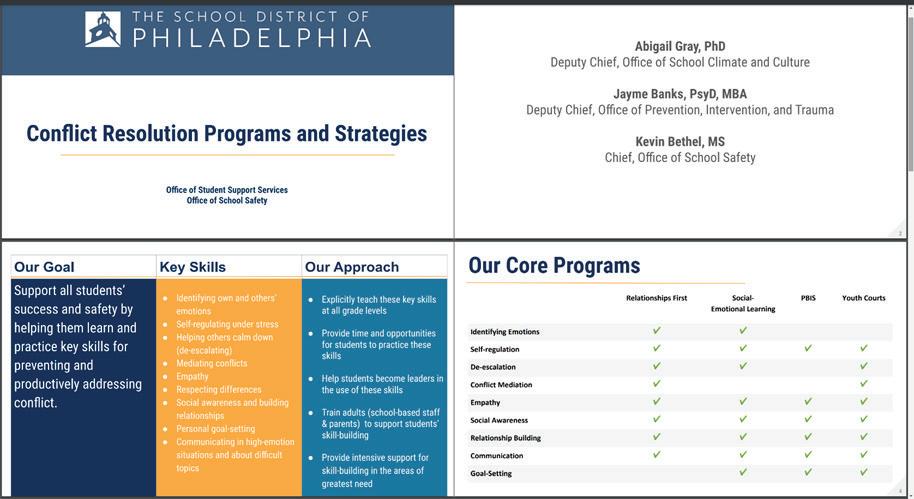
1 minute read
Hearing Findings
Philadelphia is experiencing a gun violence epidemic that has claimed the lives of children.
2020 was one of the deadliest and most violent years in Philadelphia’s history. There were 2,254 shootings, 405 of which were fatal.2 Additionally, there were 305 children aged 18 or younger that were victims of gun violence, with 35 of those children dying.3 While there are many factors that have caused this dramatic and tragic increase, it is clear that many young people, some of whom are students in the School District of Philadelphia (SDP), struggle to resolve conflicts and disputes, no matter how small, peacefully.4
Advertisement
In the past, SDP has had conflict resolution programs on some level, but 2020 has provided evidence that we need to take a significantly more expansive approach to gun violence prevention and intervention.
I want to make something very clear. The School District of Philadelphia has lost no students to COVID-19 but has lost many to violence in the city of Philadelphia. So if we truly believe that the youth are our future we must allow them to reach that future. If we truly want to have safer streets. If we truly want to see our homicide rate decrease we must implement a conflict resolution curriculum.
-Tamir Harper: Written Testimony p. 1.
The gun violence epidemic must be approached like a public health crisis.
The research is clear: gun violence is an epidemic that spreads beyond one family or one neighborhood, in the same way COVID-19 can spread.5 Children of all races, creeds, and economic backgrounds can experience tremendous trauma. Therefore, we must use a public health approach and start with the foundation that all SDP students can benefit from conflict resolution training and trauma-informed care. Evidence-based models that take a public health approach to gun violence prevention and intervention have been successful in Philadelphia.




